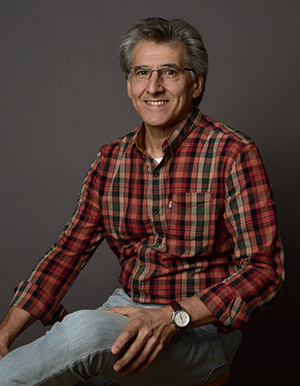Abel Oliva Lab

Research Interests
The Biomolecular Diagnostic laboratory (BDL) is a multidisciplinary research group specialising in the development of tools for clinical and biotechnological applications.
The use of human skin models in pharmacology and toxicology has become a widely accepted approach for the study of disease and evaluation of dermatology therapies, replacing the need of animal experimentation. The BDL group has produced a 3D full-humanized skin model that recapitulates a complete stratified dermal-epidermal human tissue. Skin-disease models are also under development (melanoma, ARSACS, sarcopenia, inflammation, etc.) for the study of cell interaction and physiology as well as the assay of therapeutic treatments.
The development of NLCs (nanostructured lipid carriers) is also an important component of the group. The new configuration of these lipid systems, tailored to optimise the load and rate of permeation of specific pharmacological molecules through the stratum corneum, provide an useful tool for the study of new compounds for topical applications.
The group has also developed a skin-on-a-chip platform to grow 3D full human skin in a chip, allowing apical and basal perfusion for optimal media delivery and continuous sample collection. The setup includes real-time monitoring of the tissue growing by TEER (trans-epithelial electrical resistance). In addition, other chip configurations are under development, like a vascular chip to recapitulate human capillaries inside a micro-chamber for study of diseases and treatments.
The group has previous experience in the development of devices and specific instruments for biosensing applications. Early project has been in the production of chips for single cell analysis (hybrid microfluidic chip for optical and impedance cell measurement; chips for individual cell trapping, cell sorting, cell interactions).
Group Members
-
Dragana Barros (PhD in Biotechnology; NLCs)
-
Patricia Zoio (PhD Student, AIM Program; Skin-on-a-chip)
-
Sara Ventura (PhD student, MolBios Program; Melanoma)
-
Mafalda Leite (MSc Student - Biochemistry for Health, ITQB-NOVA; Melanoma)
-
Beatriz Teixeira (MSc Student - Molecular Biology and Genetics, FCUL; ARSACS)
-
Ana Margarida Rafael (MSc Student - Biotechnology, FCT-UNL; Scaffolds)
-
Marta Magalhaes (MSc student, Materials, FCT-UNL; Vascular chip)
-
Madalena Rei (MSc Student – Human Biology and Environment, FCUL; Inflammation)
-
Rafaela Santos (MSc Student – Human Biology and Environment, FCUL; NLCs)
Selected Publications
-
Barrier-on-a-chip with a modular architecture and integrated sensors for real-time measurement of biological barrier function.
Zoio, P., Lopes-Ventura, S., Oliva, A. Micromachines (July, 2021), 12, 816.
https://doi.org/10.3390/mi12070816 -
Pigmented full-thickness human skin model based on a fibroblast-derived matrix for long-term studies.
Zoio, Patrícia; Ventura, Sara; Leite, Mafalda; Oliva, Abel; Tissue Engineering Part C: Methods (June 2021)
https://doi.org/10.1089/ten.TEC.2021.0069 -
Topical distribution and efficiency of nanostructured lipid carriers on a 3D reconstructed human epidermis model.
F. Pinto, L. Fonseca, S. Souza, A. Oliva, DPC de Barros. (2020) Journal of Drug Delivery Science and Technology. Volume 57, June 2020, 101616.
https://doi.org/10.1016/j.jddst.2020.101616
Laboratory's Website
For further information please visit the laboratory's website
Diagnóstico Biomolecular (PT)
O Laboratório de Diagnóstico Biomolecular (BDL) é um grupo de pesquisa multidisciplinar especializado no desenvolvimento de ferramentas para aplicações clínicas e biotecnológicas.
O uso de modelos de pele humana em farmacologia e toxicologia tornou-se uma abordagem amplamente aceita para o estudo de doenças e avaliação de terapias dermatológicas, substituindo a necessidade de experimentação animal. O grupo BDL produziu um modelo 3D de pele humanizada que recapitula um tecido estratificado completo de derme-epiderme. Modelos de doenças de pele também estão em desenvolvimento (melanoma, ARSACS, sarcopenia, inflamação, etc.) para o estudo da interação e fisiologia das células, bem como para o ensaio de tratamentos terapêuticos.
O desenvolvimento de NLCs (nanostructured lipid carriers) também é uma importante componente do grupo. A nova configuração desses sistemas lipídicos, adaptados para otimizar a carga e a taxa de permeação de moléculas farmacológicas específicas através do stratum corneum, fornecem uma ferramenta útil para o estudo de novos compostos para aplicações tópicas.
O grupo também desenvolveu uma plataforma “skin-on-a-chip”, para cultivar pele humana 3D completa dentro de um chip, permitindo a perfusão apical e basal de meio de cultura celular e recolha contínua de amostra. A configuração inclui uma avaliação em tempo real do crescimento do tecido por meio da medição de TEER (resistência elétrica trans-epitelial). Além disso, outras configurações de chips estão em desenvolvimento, como um chip vascular para desenvolver capilares sanguíneos dentro de uma microcâmara, destinado ao estudo de doenças e tratamentos.
O grupo tem experiência anterior no desenvolvimento de dispositivos e instrumentos específicos para aplicações de biossensor. Os primeiros projetos foram na produção de chips para análise de célula única (chip microfluídico híbrido para medição de células óticas e de impedância; chips para captura de células individuais, classificação de células, interações celulares).









